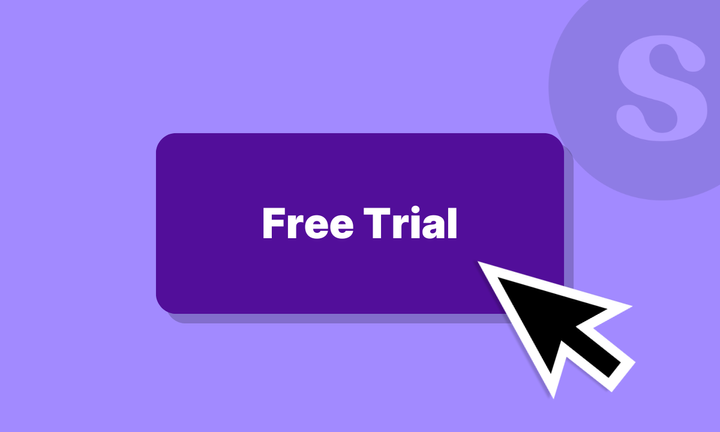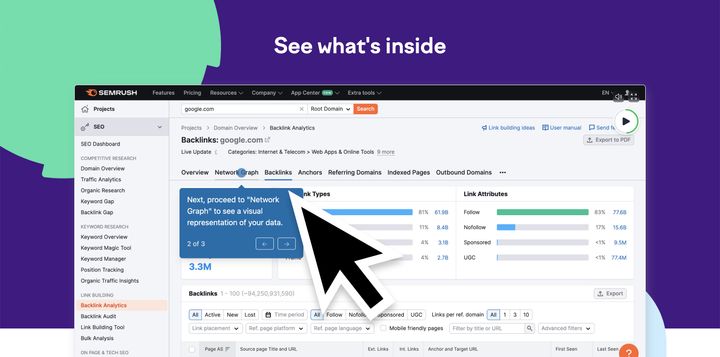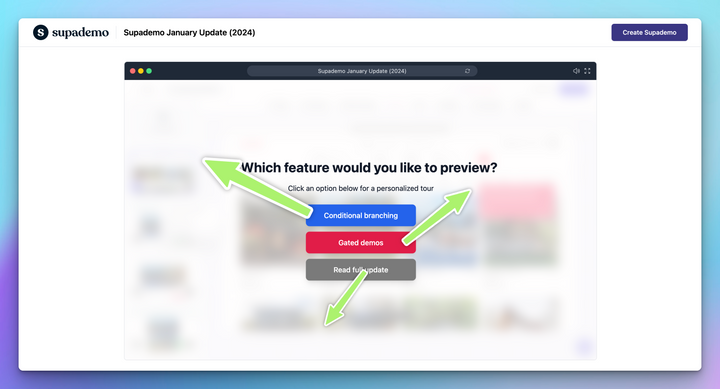Celebrating signups hitting the roof? Here is the hard truth: a signup is only the starting line. You do not have a customer yet.
The free trial is just like a test drive. Buyers are doing a full vibe check on: features, ease of use, speed to value, integrations, security, and support. If you leave them to wander, they stall before they see real outcomes.
That is why it is important to market the trial. Guide the first session, show the next step, and create small wins fast.
In this guide, we've shared 9 strategies to help you build a trial that is easy to start, fast to prove value, and stronger at converting.
TL;DR
→Choose the right trial model: Time-limited, feature-limited, usage-capped, reverse, or hybrid. Set credit card rules by intent.
→Trim signup friction: Ask for name, email, and role. Enrich company details later. Offer SSO or OAuth.
→Design for activation: Map three day-one actions. Use tours, checklists, tooltips, templates, and small celebrations.
→Run lifecycle messaging: Pair in-app nudges with short emails tied to behavior and trial stage.
→Show social proof: Place quotes, case snippets, and peer benchmarks where decisions happen.
→Make upgrades obvious: Gate advanced features, align pricing copy, add one-click outcome CTAs, allow one-time extensions.
→Analyze what matters: Track activation, time to value, key feature use, onboarding completion rate, and trial to paid by cohort.
→Ask and iterate weekly: Collect one question at key moments, ship one focused fix, and repeat.
What is a free trial marketing strategy?
A free trial marketing strategy is a structured plan to acquire, onboard, and convert trial users by guiding them to first value and measured activation, then prompting a paid upgrade.
It aligns product, marketing, and sales around clear goals, the right trial model, and a sequenced user journey.
Why market your SaaS even during a free trial?
A sign-up is the starting line, not the win.
Most trials stall before users see value. Here is why active marketing during the trial turns interest into customers.
- Combat abandonment crisis: 75% of trial users abandon within the first week without proper engagement. Strategic marketing prevents massive revenue loss from qualified prospects.
- Guide feature discovery: Users get overwhelmed by complex products and miss key value-driving features without guidance. Targeted messaging ensures users experience full product value potential.
- Accelerate time-to-value: Marketing helps users reach their "aha moment" faster through targeted tutorials and progressive onboarding. This approach increases conversion rates by 2-3x.
- Create legitimate urgency: Time-sensitive offers and feature limitation reminders provide necessary conversion pressure before trial expiration. These tactics drive immediate purchase decisions from hesitant users.
- Establish usage habits: Marketing campaigns help integrate your product into users' daily workflows during the trial period. Habit formation improves both conversion rates and long-term customer retention.
9 Strategies to create a high-converting free trial marketing strategy
Ready to turn signups into customers? Start with these nine strategies that reduce friction, spotlight value, and prompt upgrades at the right moment.
1. Define clear goals and audience
Free trials attract all kinds of visitors. If you design for everyone, you end up guiding no one. Before you launch or optimize a trial, get crystal clear on two things: who the trial is for and what success looks like for them.
- Start by defining your primary objective—whether it's maximizing conversions, gathering feedback, or building awareness.
- Then craft a one-sentence ideal customer profile. Name the segment, company size, deal size, core use case, and any non-negotiables like SSO or compliance requirements.
For example: "Mid-market fintech teams, 50–500 employees, $5–20k ARR, evaluating automated reconciliation with SOC 2 and SSO requirements." This precision prevents feature bloat in your trial and ensures every touchpoint resonates with your target buyer's specific needs and decision-making process.
2. Choose the right free trial model for your product
Your trial model should match your economics and how quickly users reach value. Do not copy a competitor’s setup. What works for them may not fit your ACV, setup complexity, buyer expectations, or support capacity.
Ask yourself what it is going to be:
- Full access or gated features?
- Time-based or usage-capped?
- Reverse trial?
- Credit card or no card?
Many teams also combine models, for example, an opt-in reverse trial that starts with full features but no credit card.
|
Users enter a credit card to start a trial, and billing begins unless they cancel. |
It fits when value appears quickly and setup is simple. |
It can damage trust if reminders are unclear or cancellation is difficult. |
Show a visible countdown, send proactive reminder emails, and make cancellation a one-click action. |
|
|
Time-limited trial |
Access ends after a fixed period such as 7, 14, 21, or 30 days. |
It fits products where users can explore meaningfully within a set window. |
Short windows can rush evaluators, especially when setup is slower. |
Choose a realistic window, provide guidance during setup, and send a pre-expiry recap with next steps. |
|
Usage-limited trial |
Access continues until a fair cap is reached on items like projects, seats, credits, or exports. |
It fits when time to value varies across teams and paces. |
Hard stops can block value before motivation peaks. |
Keep view-only access after the cap and trigger contextual upgrade prompts near the limit. |
|
Reverse trial |
Users start with premium features and lose them unless they upgrade. |
It fits when a premium workflow is the strongest early value proof. |
Abrupt downgrades can feel like a trap if expectations are unclear. |
Use transparent banners, explain what will lock and when, and send pre-expiry prompts. |
|
Paid trial |
Users pay a small fee that funds hands-on support during the evaluation. |
It fits high-ACV, security-sensitive, or complex implementations. |
The fee adds friction and can deter casual evaluators. |
Treat it like a mini POC with written success criteria, a clear timeline, and defined owner responsibilities. |
3. Optimize the trial signup experience
A smooth signup process is your first chance to delight prospects. Every extra field or step adds friction and lost trials.
- Keep your form to essentials: name, email, and a single qualifier, such as company size or role. Then use data enrichment tools like Clay, Apollo, and Lusha to capture more details later without overwhelming new users.
- Use clear, benefit-driven CTAs such as “Start your 14-day free trial, no credit card required” and reinforce trust with social proof like customer logos, testimonials, and security assurances. Offer SSO or OAuth options for instant access.
Finally, A/B test form length, placement, and copy to continuously refine sign-up rates and ensure maximum trial volume without sacrificing quality.
4. Design activation-focused onboarding
63% of users consider onboarding a deciding factor, so build a clear path to first value. Map the shortest route and define three must-do day one actions. Then guide users with tours, onboarding checklists, tooltips, templates, and nudges.
Interactive product tours
Deploy contextual tours that teach through hands-on experience rather than passive demonstrations. Focus on core workflows that drive retention, not comprehensive feature overviews. Make tours skippable for power users and segment them based on user role or use case to surface the most relevant functionality.
Here's an example of an interactive onboarding walkthrough we have for new Supademo users:
Onboarding checklists
Create visual progress indicators that break complex setups into digestible tasks. Show completion percentages and use checkmarks to build psychological momentum.

Contextual tooltips
Implement just-in-time help that appears exactly when users encounter complex features or interface elements. Use clear, concise language and include visual cues or screenshots when helpful.

Empty states and pre-built templates
Replace blank dashboards with meaningful sample data that demonstrates your product's capabilities. Provide industry-specific templates and examples that users can customize rather than building from scratch. This approach eliminates blank slate paralysis and showcases immediate value.
For example, Figma avoids the dreaded "blank page" syndrome. It provides users with personalized templates and examples based on their specified use case during onboarding setup.

Celebrate milestones
Acknowledge user achievements with congratulatory messages, badges, or progress celebrations when they complete key actions. This positive reinforcement builds confidence and encourages continued engagement throughout the trial period.
Duolingo has mastered positive reinforcement. It uses instant rewards like streak flames, quick animations, gems, and league bumps to make every micro win feel good and keep learners coming back.

5. Orchestrate lifecycle messaging across the trial
While exceptional onboarding lives inside your product, lifecycle messaging extends engagement across channels—email, in-app, and interactive demos—to reinforce learning, drive deeper exploration, and prompt timely action.
Send structured email sequences
- Welcome and orientation: Deliver a brief email immediately after signup that recaps the first steps users took in-app, linking back to key resources.
- Feature deep dives: Mid-trial, send 2–3 emails spotlighting advanced workflows that build on initial onboarding milestones.
- Social proof & case studies: Share stories from similar users who achieved success to bolster credibility before users log in.
- Urgency triggers: Two days before trial expiration, send countdown messages with personalized upgrade offers.
- Final push: On the trial’s last day, offer a limited-time discount or bonus feature to encourage conversion.

Use contextual in-app prompts
- Behavior-driven pop-ups: Trigger messages when users struggle with core actions or haven’t engaged with high-value features introduced during onboarding.
- Interactive demos: Embed short, clickable simulations that preview premium features or complex workflows outside of the main interface.

- Subtle announcements: Display banners for new integrations, webinars, or resources that augment in-product learning.
By layering these targeted touchpoints on top of your in-app onboarding, you maintain continuous engagement—from inbox to application—ensuring users stay on the path to conversion.
6. Leverage social proof
Nothing convinces B2B buyers faster than seeing peers succeed. Embed social proof throughout the trial journey to validate value and build trust:
Dashboard snapshots
Feature customer success snapshots in your dashboard and onboarding emails: include brief case study highlights with names, titles, and company logos to humanize results.
Customer testimonials
Place testimonial quotes on the signup page, pricing page and within key in-app screens, pairing each snippet with a logo or headshot for authenticity.

Peer benchmarks
After core actions, prompt users to explore peer benchmarks (e.g., “You’re in the top 10% of active users this week”) and inspire friendly competition.
Community hub
Link to an in-app forum or community hub where trial users can read reviews, ask questions, and share best practices, creating a sense of belonging that further cements their decision to convert.


7. Optimize conversion mechanics and upgrade paths
Optimize conversion mechanics and upgrade paths to turn engaged trial users into paying customers. By strategically gating features, automating extensions, and aligning your pricing page with seamless, contextual upgrade prompts, you can remove friction and create clear, compelling reasons for users to convert at every step.
- Use time-limited trials (e.g., 14 days) for features users can adopt quickly and usage-limited gates (API calls, report quotas) to drive urgency on complex functionality.
- Gate advanced features—team seats, custom analytics, premium integrations—behind upgrade prompts so users experience core value before upselling.
- Automate trial extensions for highly engaged users: trigger an in-app modal and follow-up email within 48 hours of expiration.
- Align pricing page with trial messaging: clearly compare plans, highlight locked features, and showcase soft offers (annual discounts, bundled add-ons).
- Embed one-click, contextual CTAs (“Unlock advanced analytics,” “Add more seats”) directly within feature walls and checkout.
8. Analyze user behavior
Look at behavior to find and fix friction. Track five basics: activation, time to value, key feature use, onboarding completion rate, and trial to paid.
Use cohort analysis to compare performance across segments—enterprise versus SMB, opt-in versus opt-out trials—and identify your highest-performing combinations.
If you use Supademo for interactive onboarding, you'll get a clear view of engagement analytics across demos, including step completion, drop-offs, time on step, and clicks, so you can spot slowdowns and fix the right step first.
Run A/B tests on onboarding flows, messaging sequences, and upgrade prompts, then iterate based on statistical significance.
9. Ask for feedback and iterate
Use feedback as your steering wheel, not a report to stare at. Ask one question at the right moment: Day 1, “What almost stopped you?” After the first outcome, “What would make this result more useful?” If you go quiet by Day 3, ask, “What is blocking you right now?”
Before expiry, ask, “What would make upgrading an easy yes?” Keep it in context with one-click choices and a text box. Tag answers. Pick the highest-impact theme each week. Ship a small fix. Measure activation, time to value, and trial to paid for that cohort. Tell users you listened. Repeat.
3 Quick wins you can ship this week with Supademo
If you are ready to build a winning free trial strategy, start here. These quick wins create momentum fast and help more users reach first value.
- Trim your signup. Ask only for name, email, and role. Enrich company details later so you keep pace without losing signal.
- Fix empty states. Add sample data and a few ready-made templates so nothing starts blank. This lets users see value in minutes.
- Make onboarding interactive. Replace static tours with a guided walkthrough that teaches the core workflow step-by-step.
With Supademo, you build personalized interactive walkthroughs that guide each user through the steps that matter. Deliver just-in-time help, let people learn by doing, and get them to the aha moment faster. You also see full onboarding engagement, including step completion, drop-offs, time spent on each step, and clicks.
Try Supademo today! Create engaging interactive demos for free with no upfront commitment.
FAQs
How long should a SaaS free trial be?
Match it to time to value. Simple products: 7–10 days. Moderate complexity: about 14 days. Data-heavy or complex setup: 21–30 days or a reverse trial with guided onboarding.
Should I require a credit card to start a trial?
Ask for a card if you want higher intent and have sales assist. Skip it to maximize signups in a self-serve motion. You can request payment after the user activates.
What belongs in my activation checklist?
Pick two or three actions that create a visible result. Examples: connect data, complete one core workflow, share or schedule the first output. Keep it short and role specific.
When should I offer a free trial versus a demo?
Choose a trial when users can self-discover value quickly. Choose a demo when setup is complex, value needs context, or buyers need a guided story.




